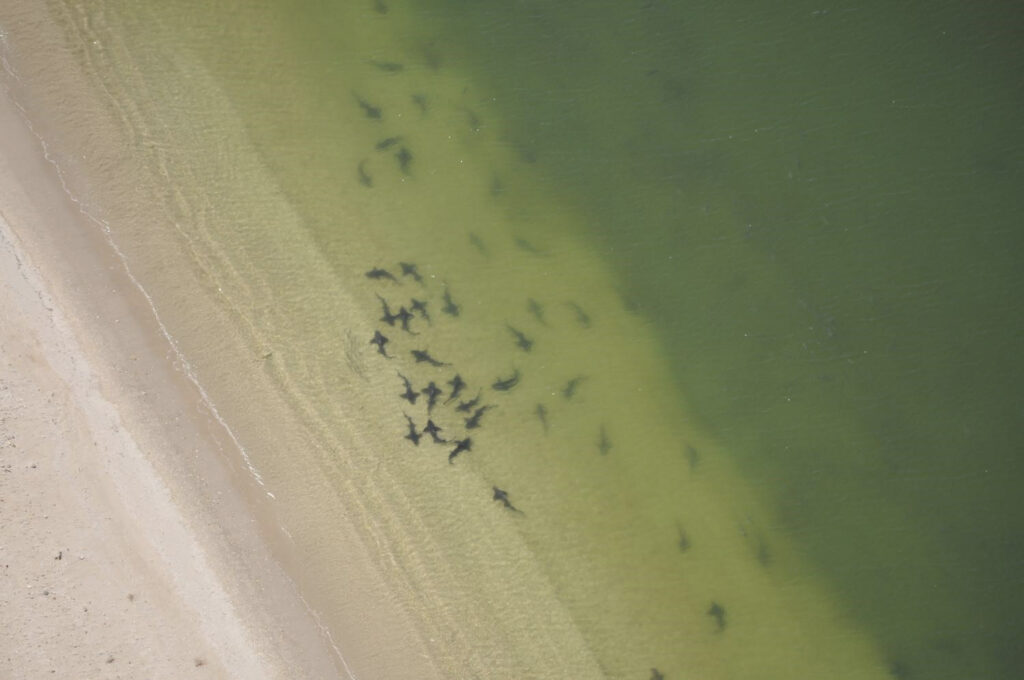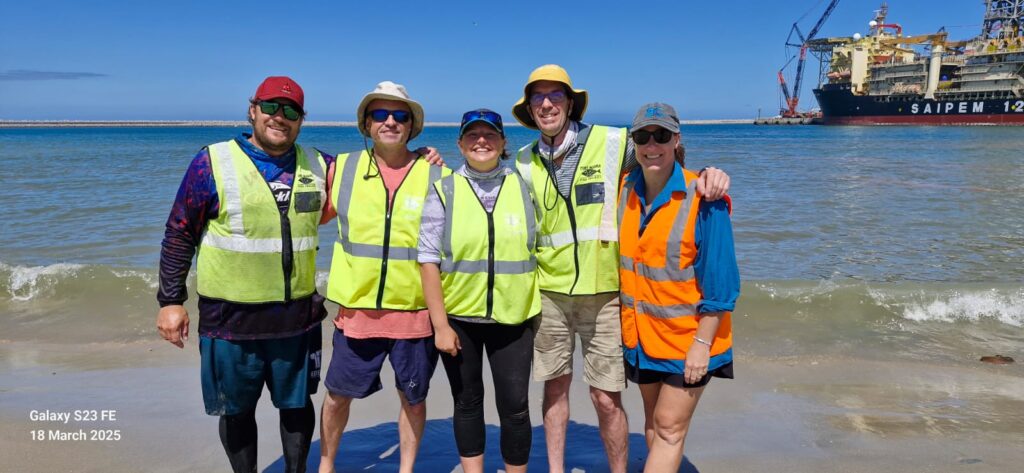The potential of ports for shark conservation
In 2002, work began on the construction of a new deep-water port, Ngqura, as part of the Coega industrial development about 20 km east of Gqeberha (formerly Port Elizabeth) in South Africa’s Eastern Cape. Involving as it did the extensive dredging of an approach channel and basin at the mouth of the Coega River and the building of a breakwater, it immediately raised concerns in some quarters that the new port would have a negative impact on the health of the marine environment. However, I took a different view: perhaps Ngqura could provide shelter and a novel rocky reef habitat for local fish populations?
To find out which scenario coincided with reality I set up a small team of scientific anglers, to study the fish populations within the port. The study was one of only a handful worldwide to research fish diversity and numbers in a pre- operational port, and we were blown away by what we found!
One of the most surprising discoveries was the abundance and diversity of shark and ray species, especially smoothhound sharks, raggedtooth sharks, dusky sharks, blue rays and diamond rays. Incredibly, we discovered through a combination of helicopter surveys and captures that smoothhound sharks (Mustelus mustelus) aggregate in their hundreds every summer within the Port.

Aerial footage of Spotted Gulleysharks (Triakis megalopterus) gathering in the shallows of Port Ngqura during winter, most likely to bask in the sun and warmer shallows. Photo © Matt Dicken
The abundance of smoothhound sharks within the Port and our lack of knowledge on their pupping grounds presented an invaluable opportunity to learn more about the behaviour of this species. To do this we initiated the first acoustic tagging study on this species along the east coast of South Africa.
In early March 2025 we travelled to the Port with the aim of catching and internally tagging 15 smoothhound sharks. To tag the sharks, they were first caught, using barbless hooks and then restrained on the shore in a water-filled trench. They were laid on their backs to initiate tonic immobility and once docile the coded V16 tag was surgically implanted into the body cavity through a small incision (2 cm) in the abdominal wall. Following transmitter insertion, the incision was then closed with a couple of stitches.
Accompanying the team on our tagging mission was Dr Francois Lampen, the resident vet at Ushaka Marine World, who was interested in testing a new portable ultra-sound to determine whether the sharks we caught were pregnant. Of the 15 (all female) smoothhound sharks, 12 of them were mature all of which were pregnant.
So, it seems, the construction of the port has provided novel fish habitat and calm conditions similar to those provided by estuaries where the adjoining shore is wave-battered and sandy-bottomed. The fact that so many species and individuals were recorded is an indication of the good current biological status of the port and is providing an important pupping ground for smooth hound sharks and likely many other species.
This project was only made possible through the incredible efforts and support of Transnet, my tagging team and the provision of acoustic tags by the joint Save Our Seas Foundation and Acoustic Tracking Array Platform transmitter grant. A big thank you to those involved in the two days tagging trip.

From left to right: Francois van Zyl, Matt Dicken, Viv Dames, Francois Lampen and Taryn Murray.
